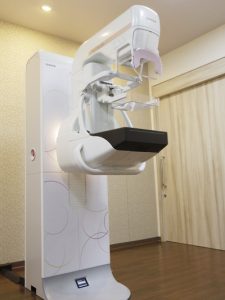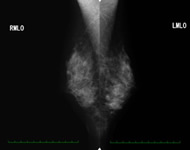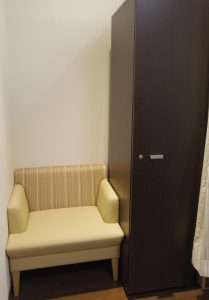放射線部
- Home
- 放射線部
ごあいさつ
放射線部は、画像診断センター(一般撮影、CT・MR)、内視鏡センター、 RI・放射線治療センター(核医学・リニアック・サイバーナイフ)、IVRセンター(血管撮影)を担当しています。 各部門では、医師や看護師をはじめ部門スタッフと協力しながら業務を行っています。 日々進歩する医療の中にあって診療放射線技師が担う責任はますます重くなっています。
このような中で、私たちは部の理念と行動規範にもとづき職責を果たしてまいります。
放射線部 部長 田中秀和
放射線部の理念
- 他職種と協力し、チーム医療を実践いたします。
- 診断価値の高い良質な画像、高度な放射線治療を提供いたします。
- 放射線機器の安全利用と被ばく線量低減に努めます。
放射線部の行動規範
- 親切でわかりやすい説明を心がけます。
- 医療安全に努め事故を未然に防ぎます。
- 学会、勉強会、講習会に参加し、最新の知識や技術を習得いたします。
- 24時間すべての放射線検査(RI、放射線治療を除く)に対応いたします。
- 当日の予約外検査であっても実施いたします。
- 患者さんの検査待ち時間、複数にわたる放射線検査の待ち時間、画像データ(CD、フィルム)出力の待ち時間短縮に努めます。
- 地域連携室を通しての依頼検査も積極的に受け入れていきます。
- 各種認定資格の取得、学会発表へのエントリーを目標に研鑽していきます。
画像診断センター
一般撮影、造影検査、骨塩定量検査、X線CT、MRIを行います。
一般撮影
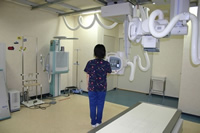 一般撮影は、頭部、脊椎、胸部、乳腺、腹部、四肢などの撮影や歯科・口腔外科のパントモ(パノラマ)撮影など造影剤を使用しないX線撮影の総称です。炎症、痛み、骨の変形・骨折、ガスの状態、結石の有無などが撮影の対象になります。
一般撮影は、頭部、脊椎、胸部、乳腺、腹部、四肢などの撮影や歯科・口腔外科のパントモ(パノラマ)撮影など造影剤を使用しないX線撮影の総称です。炎症、痛み、骨の変形・骨折、ガスの状態、結石の有無などが撮影の対象になります。
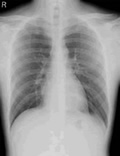
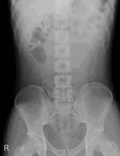
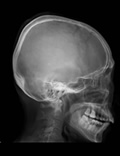
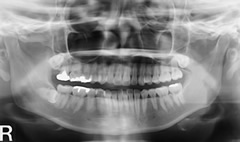
造影検査
IVP(排泄性腎孟尿路造影)検査
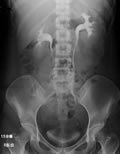 造影剤を静脈から注射して時間を追いながら撮影します。腎機能・腎・膀胱の形態がわかります。検査時間は30分程度で、食事制限があります。
造影剤を静脈から注射して時間を追いながら撮影します。腎機能・腎・膀胱の形態がわかります。検査時間は30分程度で、食事制限があります。
下肢静脈検査
検査時間は40分程度で食事制限があります。


胃・食道・十二指腸検査
大腸検査(注腸検査)
内視鏡的逆行性胆膵管造影検査
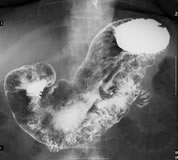
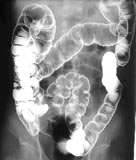
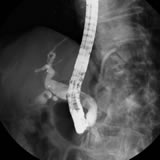
乳房撮影(マンモグラフィー)
乳がんの発見に優れた検査です。
乳房は柔らかい組織のため通常のX線装置ではきれいに撮影できません。そのため乳房専用のX線撮影装置を使うことで乳がんの発見につながる「微小な石灰化」「しこり」などを写すことができます。
また、「しこり」の精密な検査として、マンモトーム装置で生検(針を刺し「しこり」を吸引、細胞を調べる)を行います。
撮影およびマンモトーム検査は、女性技師が担当します。撮影時間は20~30分、マンモトーム生検は1~2時間程度です。
骨塩定量検査(骨密度検査)
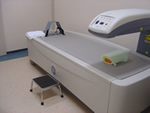 2種類のX線を照射し、そのX線透過強度により骨密度を計算します。女性に多い骨粗しょう症の診断に有効です。検査時間は10分程度で腰椎、大腿骨を検査します。
2種類のX線を照射し、そのX線透過強度により骨密度を計算します。女性に多い骨粗しょう症の診断に有効です。検査時間は10分程度で腰椎、大腿骨を検査します。
CT(Computed Tomography)検査
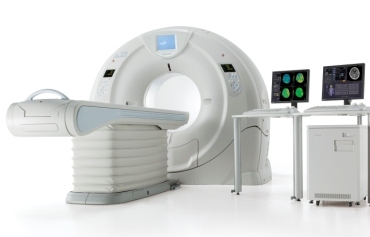
CT検査室(320列マルチCT)
- 撮影部位に金属類がついていると撮影の妨げになることがあります。必要に応じて検査衣に着替えていただきます。
- 妊娠中または妊娠の可能性がある方は、お申し出ください。
(基本的に検査はできません。)
造影CT(Contrast Enhanced CT)
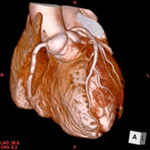
冠動脈CT(心臓CT)
- 造影剤には副作用があるため、事前に「造影剤に関する説明書及び 同意書」をお読みになってください。また、腎機能(血清クレアチニン 値)のデータがない方は、事前に採血をしていただきます。その際、結果が出るまでお待ちいただきます。あらかじめご了承ください。
- 検査前3時間は食事を取らないでください(お水、お茶程度の水分は結構です)。
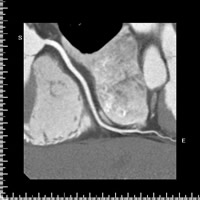
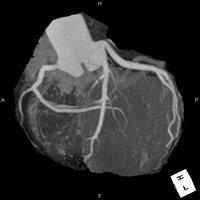
頭部CT
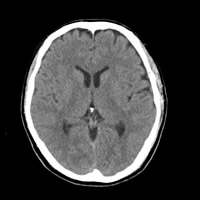
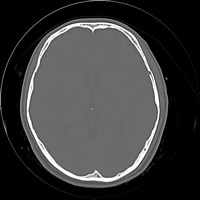
胸部CT
肺野の縦隔疾患等が疑われるときに行います。
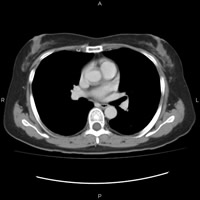
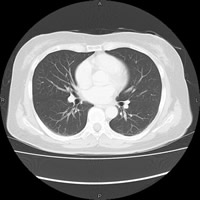
CTアンギオ(血管造影)画像
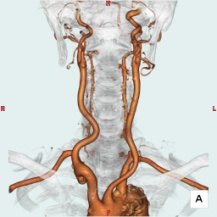
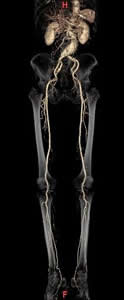
MRI(Magnetic Resonance Imaging) 検査
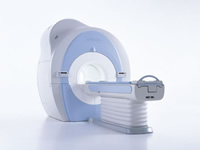
MRI装置(1.5テスラ)
- 検査中は音がします。
- 狭いところが苦手な人は検査ができないことがあります。
患者さんに協力していただくこと
- 金属類(補聴器、ヘアピン、メガネ、時計等)は持ち込めません。
- ペースメーカーを使用している方はお申し出ください。
脳MRI
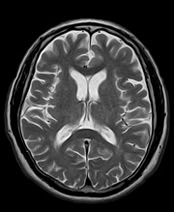
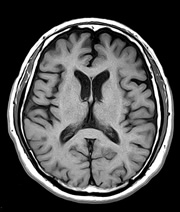
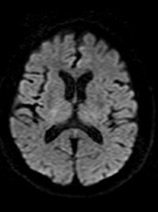
腹部MRCP(Magnetic Resonance Cholangio Pancreatograhy)
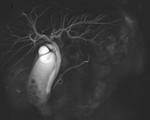
造影MRI CE MRI(Contrast Enhanced MRI)
MRA(MRアンギオ)
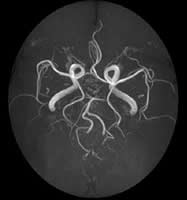
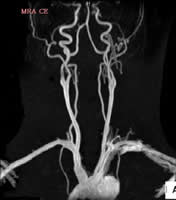
IVRセンター
IVRセンター(interventional radiology)
血管撮影やカテーテル治療、血管内手術を行います。これらを総称して血管系IVRと呼ばれています。
血管撮影装置
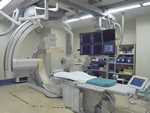 X線管球が多方向に回転し、観察したい血管が良く見える方向で高速の連続撮影を行います。頭、心臓、胸腹部、上肢・下肢などの血管撮影検査ができます。
X線管球が多方向に回転し、観察したい血管が良く見える方向で高速の連続撮影を行います。頭、心臓、胸腹部、上肢・下肢などの血管撮影検査ができます。
心臓カテーテル検査は、心腔内や血管内にX線透視下でカテーテルを挿入し、造影剤を用いて心臓の状態や血管の異常などを見つける検査です。
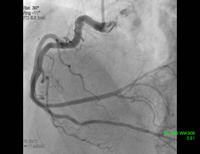
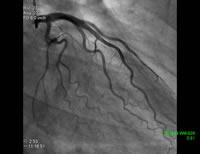
脳血管検査は、主に正面と側面の2方向で撮影し、さらに回転撮影で3D画像を作成して任意の角度から観察します。動脈瘤や出血などを調べる検査です。
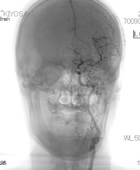
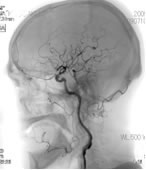
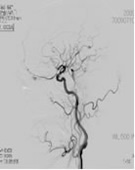
ハイブリッド室
血管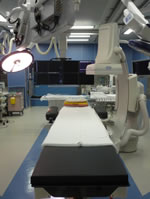 撮影装置を配備しており、手術室機能も持つ部屋です。具体的には、血管外科、心臓血管外科のステントグラフト内挿術、脳血管内治療、救急外傷等、通常の血管内カテーテル治療の中で、状況により手術への切り換えを考慮すべき症例や、カテーテル治療と手術を同時に行う症例を中心に取り扱います。
撮影装置を配備しており、手術室機能も持つ部屋です。具体的には、血管外科、心臓血管外科のステントグラフト内挿術、脳血管内治療、救急外傷等、通常の血管内カテーテル治療の中で、状況により手術への切り換えを考慮すべき症例や、カテーテル治療と手術を同時に行う症例を中心に取り扱います。
経カテーテル大動脈弁留置術(TAVI)を実施する場合、状況によってはインターベンションから緊急の開胸手術に切り替えるケースがありますが、このような時でも患者さんを移動すること無しに、その場で対応出来る設備です。この部屋では、各診療科医師、看護師、診療放射線技師、臨床工学技士がチームとして協力し合いながら、カテーテル業務を行います。
<チーム例>
EVARチーム:血管外科医、麻酔科医、看護師、診療放射線技師、臨床工学技士
TEVARチーム:心臓血管外科医、麻酔科医、看護師、診療放射線技師、臨床工学技士
救急Hybridチーム:救急部外科医、救急部放射線科医、看護師、診療放射線技師
<装置>
撮影装置は、検査寝台が傾斜出来るタイプのFPDバイプレーン血管撮影装置で、さらに手術台を組み合わせた構成となっています。当院の汎用型血管撮影装置と殆ど同機能であり、従来から手術室で使用されていた外科用Cアーム装置よりも、遥かに高精細な透視及び撮影画像を得ることができます。
また、3Dワークステーションによる CTライクイメージング、3Dロードマップなどの診断支援・手術支援機能などがあります。
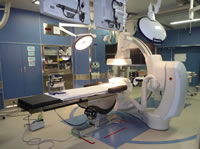
<清浄度>
・FED-STD-209D(米国連邦規格)クラス1000
・手術台 ハイブリッド手術室用システム
チーム医療について
近年の医療技術の進歩により、医療従事者に求められる業務は幅広く同時に専門性も求められます。今日、病院における放射線技師の役割は技術を提供する際にチームの一員であることを認識して患者さん主体のサービスを実施しなければなりません。そして、他職種のスタッフに対しても誠意と真心をもって職務にあたることが必要です。
病院は、医師と看護師、薬剤師、臨床検査技師、理学・作業療法士、臨床工学技士、栄養士、放射線技師などのコメディカルから成り、それぞれの役割は増大しています。コメディカルは、基礎となる知識や技術が異なりますがそれぞれ高い専門性が要求されます。新しい技術や治療法の発達、患者さんのQOL(Quality of life)を尊重する医療の流れの中で協力して医療サービスに取り組んでいかなければなりません。
また、病院の理念である「地域の人々にとってより良い地域医療の創造」に謳われているように病診連携(病院と診療所またはクリニックとの連携)の推進も積極的に行っており、CT・MRI・RI検査、乳房撮影、骨塩定量検査等の高額医療機器の共同利用が可能となっています。このような状況において放射線部では、これからも地域の患者さんを中心とした安全で質の高い医療を提供できるように、広い意味でのチーム医療を実践してまいります。
RI・放射線治療センター
RI(Radio Isotope)検査:核医学検査
RI検査とは?
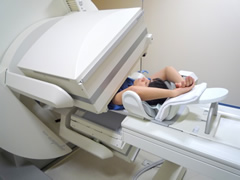 まず、検査の目的に適した放射性医薬品を静脈から注射(あるいは飲むこと)により目的の臓器・組織に集めます。この放射性医薬品には微量の放射性物質が含まれているためそこから放出される放射線を専用のカメラで検出し、コンピュータにて処理を行います。そして得られた情報から臓器の形・機能・代謝などを調べていきます。
まず、検査の目的に適した放射性医薬品を静脈から注射(あるいは飲むこと)により目的の臓器・組織に集めます。この放射性医薬品には微量の放射性物質が含まれているためそこから放出される放射線を専用のカメラで検出し、コンピュータにて処理を行います。そして得られた情報から臓器の形・機能・代謝などを調べていきます。
SPECT装置
SPECT装置は体内に投与された放射性医薬品からでる微量な放射線を捕らえる装置で、専用のカメラが体の近接することにより、画像を収集することができます。
放射性医薬品について
- 放射性医薬品には放射性物質が含まれておりますが、その量はごく微量であり、放射能の減衰も早く、生理的に体外に排出されますので被曝による人体への影響は心配ありません。
- 放射性医薬品は副作用も極めて少なく安心して受けられます。
- 放射性医薬品には様々な種類のものがあり、それぞれ各検査に適したものが使用されます。
骨に集まる放射性医薬品を体内に投与し全身の骨の写真を撮ります。注射後約3時間後に検査を開始します。検査時間は30分~40分程度です。この検査では主に癌の骨転移の有無などを調べます。
写真上で骨転移は黒く写りますが中には形が欠けて写るものもあります。また、骨折や脊椎の変性疾患なども黒く写ります。
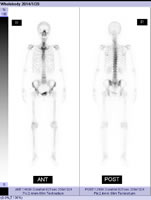
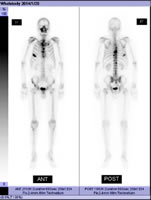
脳の血管から脳組織に取り込まれる放射性医薬品(2種類あります)を体内に投与し脳の血流状態を調べます。注射と同時に検査を開始します。検査時間は30分~40分程度です。この検査では主に脳血管障害やアルツハイマー型認知症などを診断します。
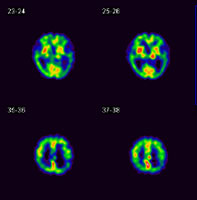
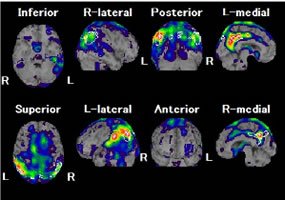
得られたデータをコンピュータで解析を行ない、上の図のような画像を作成しています。左上の図は脳の断面図で、脳血流分布をカラー表示させることで血流状態を分かりやすく表現しています。そして右上の図は画像統計解析手法とよばれるもので、正常脳と比較することで血流が低下しているところだけが視覚的に分かります。この画像統計解析手法は医師が診断を行なう際の補助的な役割として活用されています。
心臓の血管から心筋へ取り込まれる放射性医薬品を体内に投与し、心筋の血流状態を調べます。この検査では安静時と負荷時の2回の検査を行ないます。負荷検査では自転車を使った運動負荷あるいは薬剤を使った薬剤負荷のどちらかを行ないます。検査時間は2時間程度です。この検査では虚血心筋の診断や心臓カテーテル検査の決定、その治療後の血流回復の具合などをみます。

得られたデータをコンピュータで解析を行ない、左上の図のように心臓を輪切りにして右上の図のような画像を作成します。心筋の血流分布をカラー表示させることで血流状態を分かりやすく表現しています。
地域医療連携室を通じて地域医療機関の皆様に当院のRI検査を利用していただくサービスを行っています。事前に地域医療連携室にて予約をしていただいた後、当院にて検査を行います。そして後日、検査結果をお届します。
また、検査項目に関しては以下のようなものがあります。
- 骨シンチ(骨転移の検索)
- ガリウムシンチ(炎症性疾患の検索)
- 脳血流シンチECD(認知症の診断)
- 脳血流シンチIMP(脳血管障害の診断)
- 心筋血流シンチTF(虚血心筋の診断)
- 心筋交感神経シンチ(パーキンソン病の診断)
放射線治療
当院の放射線治療は、医師2名、診療放射線技師4~5名、看護師2名のチームのチームで運営されております。
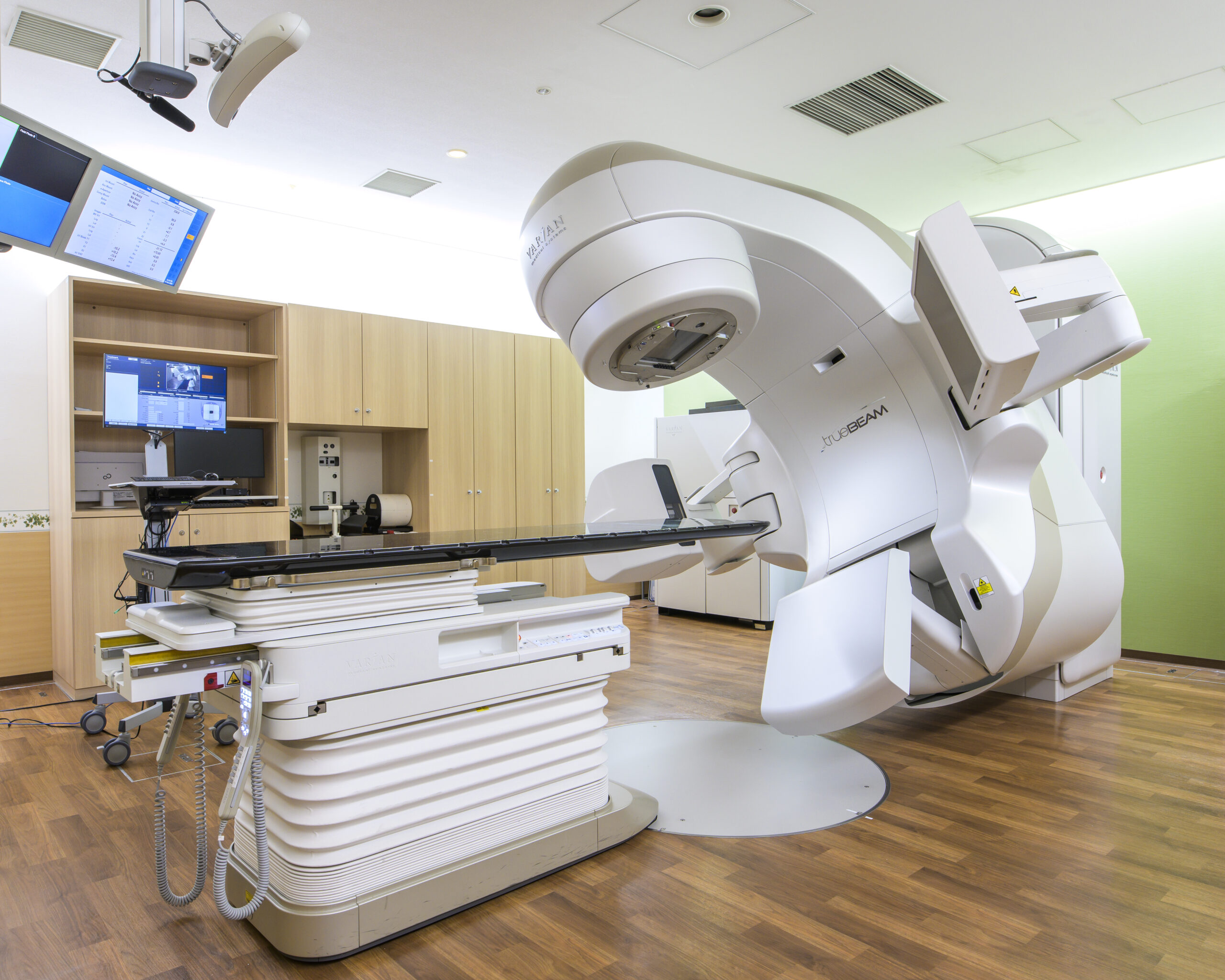
当院のリニアック装置のエネルギーは、X線が6、10MVと電子線が5、6、8、10、12、14MeVの合計8本のビームを発生することが出来ます。エネルギーは病気の大きさや場所を考えながら最適なエネルギーを選択して行います。またマルチリーフコリメータといわれる部品が付属しているので、腫瘍の形や大きさに合わせた形状にビームを当てることが可能となるため、正常組織への被ばく線量を最小限に抑えることが可能です。
実際の放射線治療の流れはまず、放射線治療医が診察し、その後治療計画用のCTを撮影してそのCTデータを利用して照射計画をプランニングしていきます。放射線治療の初日は「リニアックグラフィー」と呼ばれる確認写真を撮影するため全所要時間は20~40分ほどかかります。この確認が取れたら、そこに皮膚インクと呼ばれるインクで印をつけます。 2日目以降は初日の印に合わせて体位置を調整し、治療するので所要時間は10~20分ほどで終了となります。また途中で照射位置がずれていないかなどを確認するために再度確認写真を撮ることがあります。
また、定期的に診察を行いますので、放射線治療に対する疑問点や質問がございましたら、お気軽にお尋ねください。
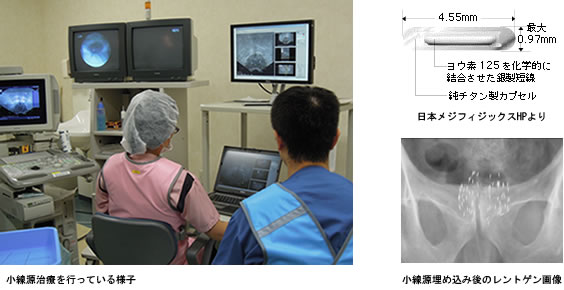 当院で行う組織内照射は、ヨード125と呼ばれるアイソトープを前立腺内に埋め込む方法です。ヨード125は59.4日の半減期、27.4~35.5keVと低いエネルギー光子を放出する核種であるため、挿入した組織内の照射線量を高く維持すると同時に医療従事者や介護者の被ばくを軽減することが可能です。
当院で行う組織内照射は、ヨード125と呼ばれるアイソトープを前立腺内に埋め込む方法です。ヨード125は59.4日の半減期、27.4~35.5keVと低いエネルギー光子を放出する核種であるため、挿入した組織内の照射線量を高く維持すると同時に医療従事者や介護者の被ばくを軽減することが可能です。また、永久埋め込み式なので、取り出す必要はありません。手技時間は3時間ほどで通常1泊2日の入院となります。
副作用としては、頻便や排便痛、出血、頻尿や排尿痛、放射線皮膚炎や下痢などがあります。放射線治療の終了後に、時間の経過とともに副作用は弱まっていきます。副作用については事前に主治医に確認しておきましょう。いくら前立腺がんの症状が改善されたとしても、それによってひどい副作用に悩まされることになるのでは、必ずしも最善の選択とは呼べません。また、実際に副作用が出てきた場合に辛い時は、無理をせずに担当医に相談してください。
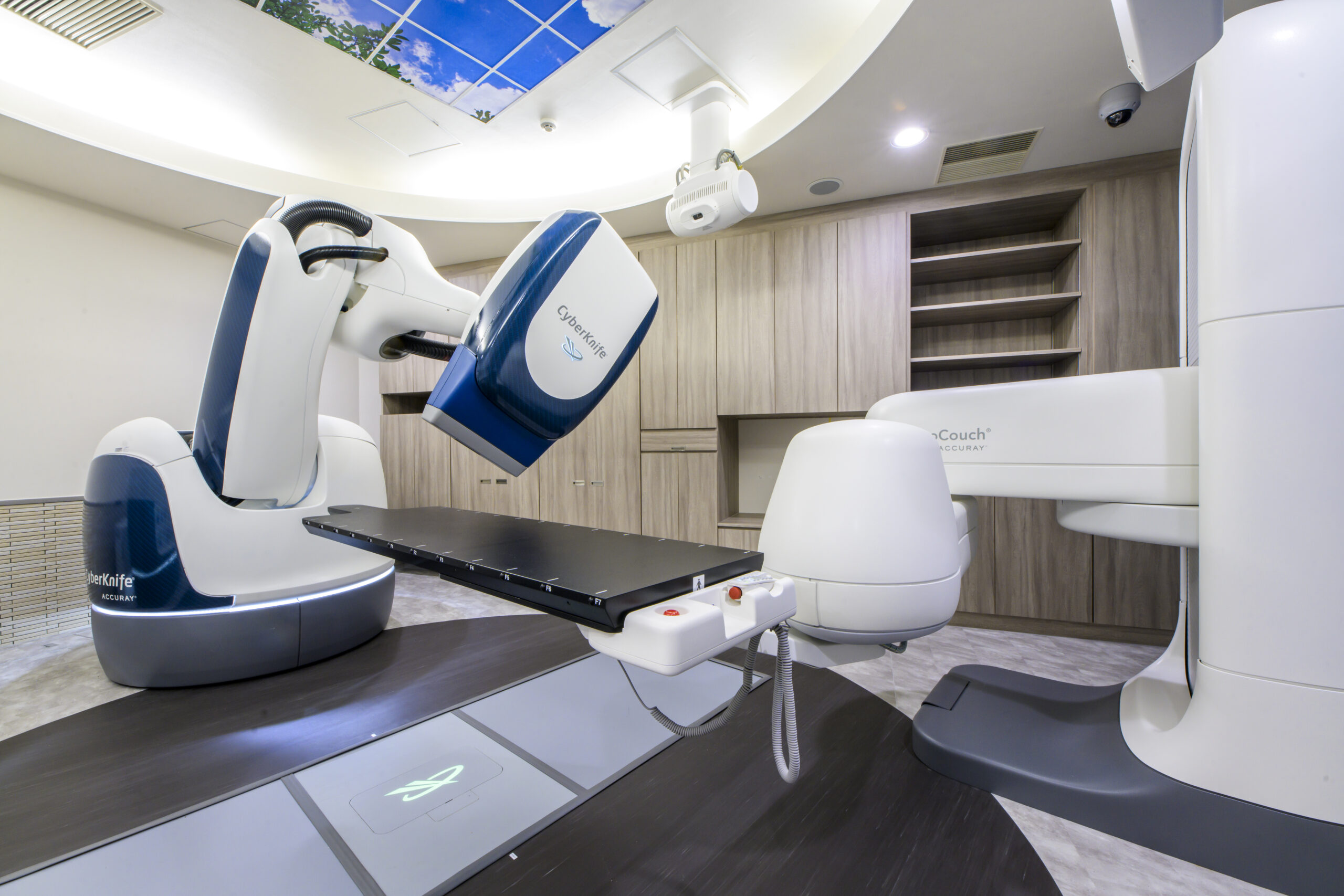
1.サイバーナイフとは
サイバーナイフ治療とは、高精度のロボットアームにX線照射装置を組み合わせた画期的な治療法です。治療中、患者さんのわずかな動きにも三次元的に検出し、直ちにズレを補正して、ロボットが正確に多方向から病巣を狙います。病巣のみに放射線を集約させ周辺正常組織に対する影響を最小限にすることが可能です。
2.ガンマナイフとの比較
a.)固定方法
ガンマナイフでは局所麻酔下で、外科的にネジを使い頭蓋骨を固定します。サイバーナイフでは、シェルと呼ばれるメッシュ状の簡易固定具で覆うのみです。
b.)治療対象部位
ガンマナイフでは頭蓋内のみですが、サイバーナイフは頭頚部、体幹への治療が可能です。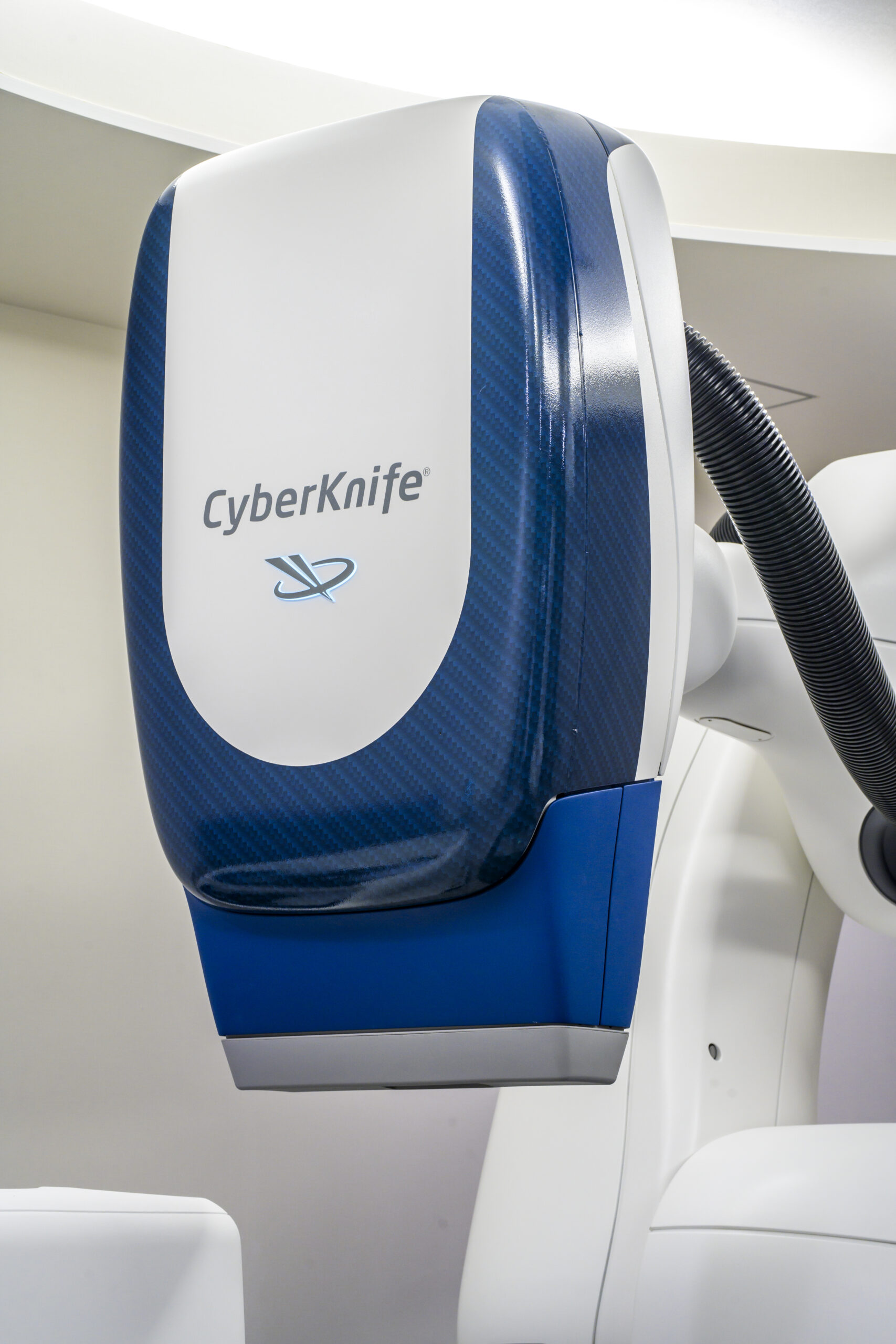
3.サイバーナイフの特徴
a.)様々な形状、部位に対応可能
6つの関節を持つロボットアームは最大1200方向からの照射を行う事ができ、複雑な腫瘍形状にもmm単位以下の精度で対応します。
b.)自動追尾システム
治療中は、低エネルギーX線源と平面設置型の検出器が高解像度の画像を撮影します。同時に呼吸検出器でもモニタリングされており、呼吸などによるものも含め、患者さまが動いてしまった場合も腫瘍の位置を自動的に補正し、追尾します。また大幅に動いてしまった場合には自動的に照射を停止し、再度、位置確認を行い、治療を再開します。
c.)線量分布
サイバーナイフは、あらかじめ放射線を照射したくない組織などを選択し、照射方向や線量を決める帰納法的治療計画(インバースプランニング)で行うため、腫瘍や正常組織に対して理想的な線量分布を得る事ができます。従来の放射線治療とは逆のプロセスで治療計画を立てています。
4.治療回数
病変の周囲正常組織への影響が少なく、病巣部のみに大線量照射が可能です。その為、従来の放射線治療に比べて一回の照射に必要な時間は長くなりますが、放射線治療を行う期間は短くなり、患者さまの日常生活への影響を抑える事が可能です。 治療回数は1回~数回ですが、病変の種類や大きさにより照射回数を適切に決定します。
5.治療対象症例
適応疾患は以下のいずれかです。
・原発性脳腫瘍(直径が 3cm 以下)
・転移性脳腫瘍(直径が3cm 以下で3個以下、且つ全身状態が本治療に耐えられる)
・限局性頭頚部腫瘍(本治療の照射範囲が設定できる大きさ)
・脳動静脈奇形
・全脳照射後の局所再発(直径が3cm 以下)
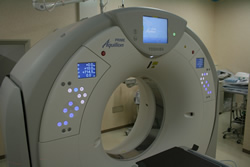 80列CTAquilion PRIMEを導入
80列CTAquilion PRIMEを導入2013年12月より、放射線治療計画室で東芝社製80列CT Aquilion PRIME が稼働を開始しました。
現在の放射線治療では、全例で治療計画のためにCTを撮像しています。CTの画像をもとに腫瘍の位置、範囲を同定し照射範囲と照射量を決定しています。 Aquilion PRIMEでは80列ヘリカルスキャンを行なうことで短時間での撮像が可能となることで患者さんが息止めがも短くなり、鮮明な画像を得ることができます。また、最新の画像処理機能を搭載しているので、滑らかでボケが少ない画像での診断と計画が可能となりました。
そしてCTの入り口も広くなり、放射線治療に用いる固定具を使用した撮影も可能となるとともに、圧迫感の少ない装置となっています。
Aquilion PRIMEでは、4cmの範囲を連続的に撮影することが可能となり、腫瘍の動きを目視できるようになりました。当院に導入されているサイバーナイフを用いたピンポイント治療では、腫瘍の動きを正確に把握して集中性を高めた照射が必要となるのですが、今まで以上にピンポイントの治療が可能となり、副作用が少なく効果的な治療が可能となります。
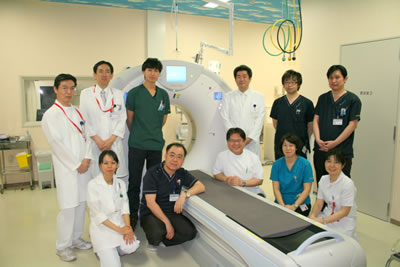
診療実績
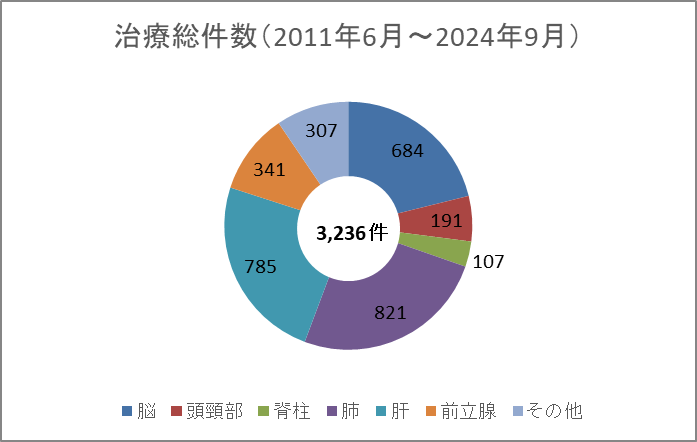
| 2020 | 2021 | 2022 | 2023 | 2024 | |
| 一般撮影 | 51999 | 55166 | 56922 | 54988 | 53527 |
| CT | 32828 | 33815 | 34590 | 34653 | 34584 |
| MRI | 9798 | 10963 | 11528 | 11269 | 11415 |
| RI | 1554 | 1894 | 1828 | 1593 | 1503 |
| 血管造影 | 4312 | 4115 | 4075 | 3714 | 3396 |
| マンモグラフィー | 689 | 642 | 607 | 524 | 356 |
| 骨密度 | 1409 | 1805 | 2076 | 1817 | 2079 |
医療関係者の方へ
各種認定資格について
・博士号
金沢大学医学保健学総合研究科博士号 1名
・国家資格
第1種放射線取扱主任者 10名
第1種作業環境測定士 2名
・日本乳がん検診精度管理中央機構検診マンモグラフィ撮影認定
乳房撮影専門認定技師 8名
・日本放射線技師会認定
放射線機器管理士 1名
放射線管理士 2名
臨床実習指導教員 5名
X線CT認定技師 3名
画像等手技支援認定診療放射線技師 2名
Ai 認定診療放射線技師 1名
・放射線治療品質管理機構認定
放射線治療品質管理士 2名
・医学物理士認定機構
医学物理士 2名
・日本核医学専門技師認定機構
核医学専門技師 4名
・日本救急撮影技師認定機構
救急撮影認定技師 6名
・日本放射線治療専門放射線技師認定機構
放射線治療専門放射線技師 1名
・日本血管撮影・インターベンション専門診療放射線技師認定機構
血管撮影・インターベンション専門診療放射線技師 1名
・日本磁気共鳴専門技術者認定機構
磁気共鳴専門技術者 1名
・肺がんCT検診認定機構
肺がんCT検診認定技師 3名
・日本骨粗鬆症学会
骨粗鬆症マネージャー 1名
(2021年12月現在)
学生の方々へ
- 施設見学について
個人見学の申し込みは受けておりません。 - 学生実習について
当院を希望される方は母校に相談してください。個人相談はお電話ください。 - 就職情報
ホームページをご覧ください。
研究業績
こちらをご覧ください。

